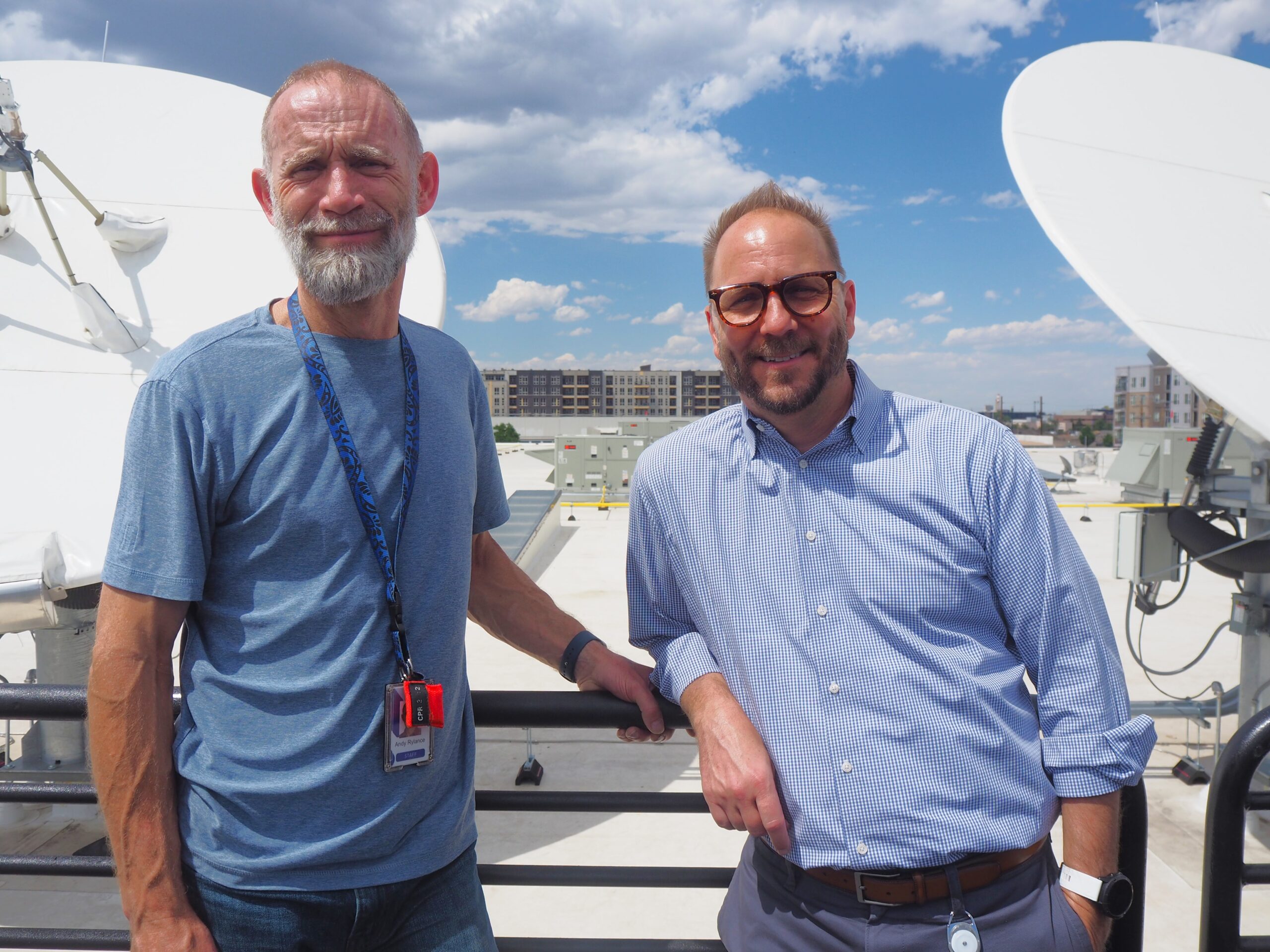
Denver7 General Manager Brian Joyce, right, and Director of Engineering Andy Rylance stand on a rooftop deck at 2323 Delgany St., one of the on-air sets within the 85,000-square-foot building. (Thomas Gounley/BusinessDen)
Denver’s KMGH-TV, the ABC affiliate known as Denver7, will soon begin airing from a new location.
A 5 p.m. newscast one day next week, anchored by Shannon Ogden and Jessica Porter, is expected to be the first broadcast live from 2323 Delgany St. in RiNo, where the E.W. Scripps Co.-owned broadcaster has spent more than a year building out an 85,000-square-foot facility.
“I really think we have built the TV station of the future, with the technology that’s in here,” said Brian Joyce, Denver7 vice president and general manager.
The facility off Park Avenue is more tucked away than the one it replaces. Since 1969, Denver7 has been operating from a building at 123 Speer Blvd., right on the corner of Speer and Lincoln Avenue.
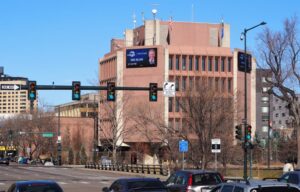
Denver7’s building at Speer Boulevard and Lincoln Street. (BusinessDen file)
The station has been at the center of Denver’s TV station cluster. Competitors KUSA/9News, KCNC/CBS Colorado and KDVR/Fox31 have all operated within blocks of the intersection for decades. Fox31 was the last to relocate, moving to 100 Speer Blvd. in 2000.
Cincinnati-based Scripps sold Denver7’s previous block to a developer for $35 million in 2021, months after the City Council declined to make the station’s building a city landmark. Denver7 has been leasing 123 Speer back while working to relocate.
A key priority for the station was a more efficient layout. On Speer, staff have been divided across five small floors, and the building has lacked a central common area.
As it considered new buildings, the station also needed high ceilings, so lighting and other infrastructure could be positioned well above the weatherman. The station wanted to stay within Denver, ideally close to downtown. And, regarding those massive white satellite dishes you see on TV stations, “it’s always best if you can have your feeds on the building,” said Andy Rylance, Denver7 director of engineering.
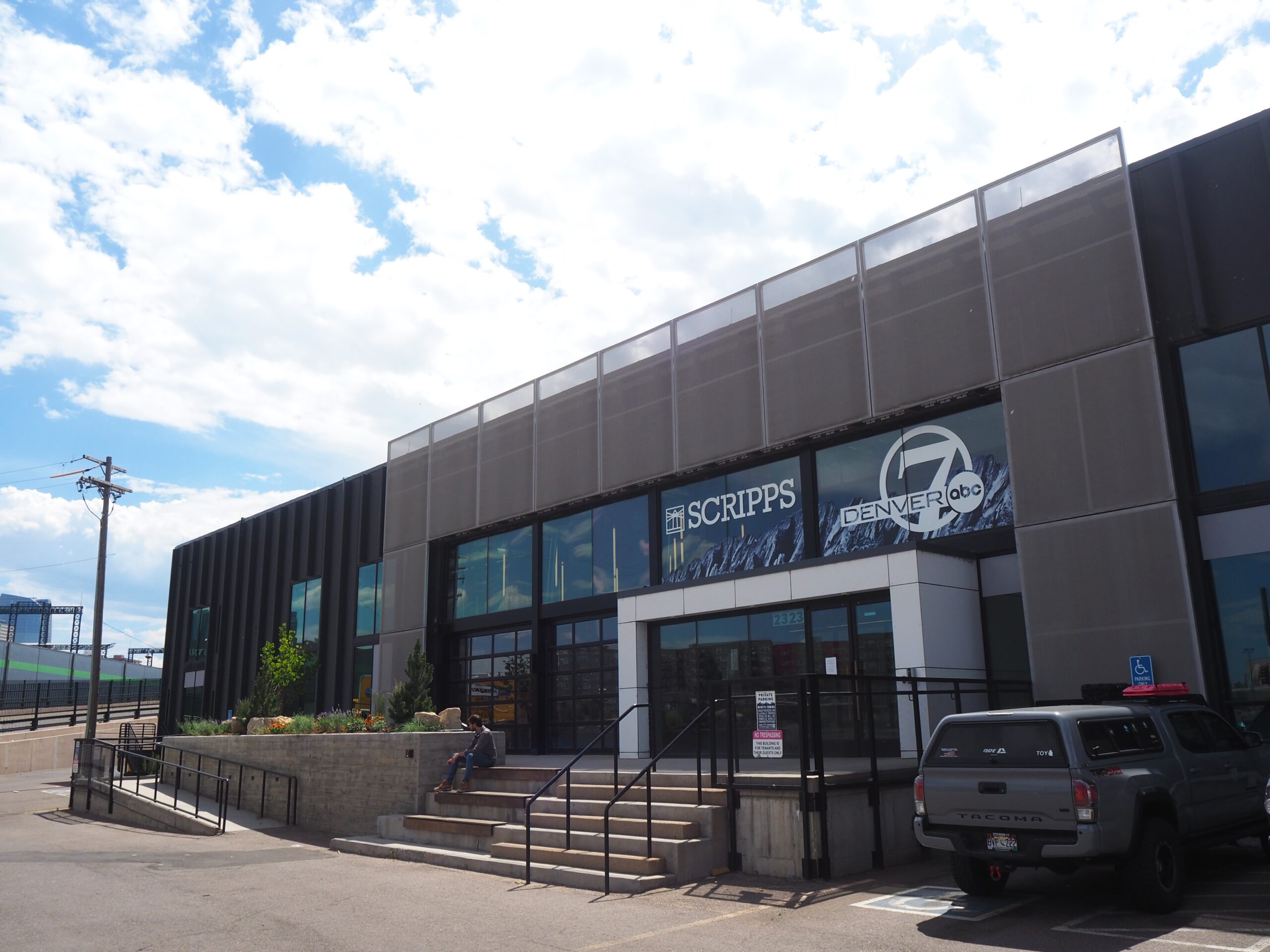
WeWork once planned to operate in the building at 2323 Delgany St., which Denver7 leased in late 2022. (Thomas Gounley/BusinessDen)
Rylance said the company looked closely at 1740 Broadway — “from a satellite perspective, it was challenging” — before opting in late 2022 to lease 2323 Delgany St., where the coworking firm WeWork once planned to open.
“If we’d been building from ground up, if we had a greenfield site, it wouldn’t have been too far from what this structure provided — the openness, the spacing between columns,” Rylance said.
The station’s landlord is Ivy Realty, which paid $26 million for the property last year. About 75,000 square feet is on the ground floor. The remainder is on a mezzanine level. The Speer building is about 64,000 square feet, Joyce said, not counting the basement.
“I think it just breeds more collaboration and openness among all our teams,” Joyce said of the new layout. “Not that we didn’t have it before, but it was harder.”
Denver7 has about 170 employees, with 100 or so considered part of the newsroom. Another 20 or so employees employed directly by the parent company will also work from the building.
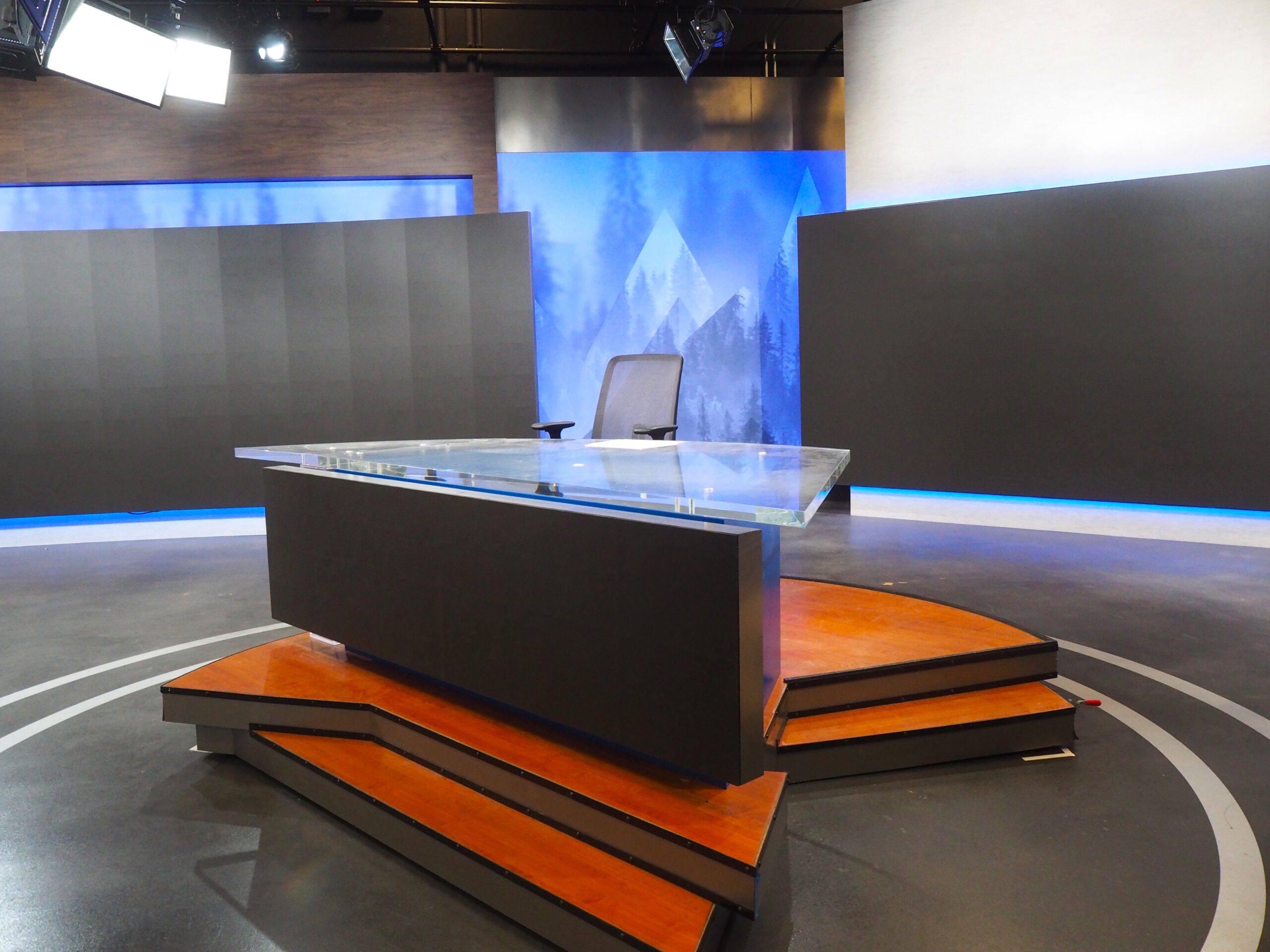
One of the sets inside Denver7’s new facility. (Thomas Gounley/BusinessDen)
On Speer, Denver7 has had two sets. In RiNo, there are seven, including one specifically designed for streaming and another on the rooftop, where the background is Coors Field and downtown.
“That enables us to have a little differentiator from everybody else in the market … My hope is that weather can be a key component up there,” said Joyce, who declined to disclose the cost of the new facility.
There are two small voiceover rooms, where reporters record the script that plays over their packages, compared to one on Speer. There are three production control rooms, again compared to one previously. The common area is dubbed “The Lighthouse,” a reference to the company’s motto and logo. There will be 250 TVs around the building when everything is set up.
A large conference room at the edge of the newsroom is named after Anne Trujillo, a reporter and anchor who signed off from Denver7 last year after nearly 40 years at the station. Other meeting rooms are, in true Colorado fashion, named after places around the state, such as Mount Blue Sky, Great Sand Dunes National Park and Monarch Pass.
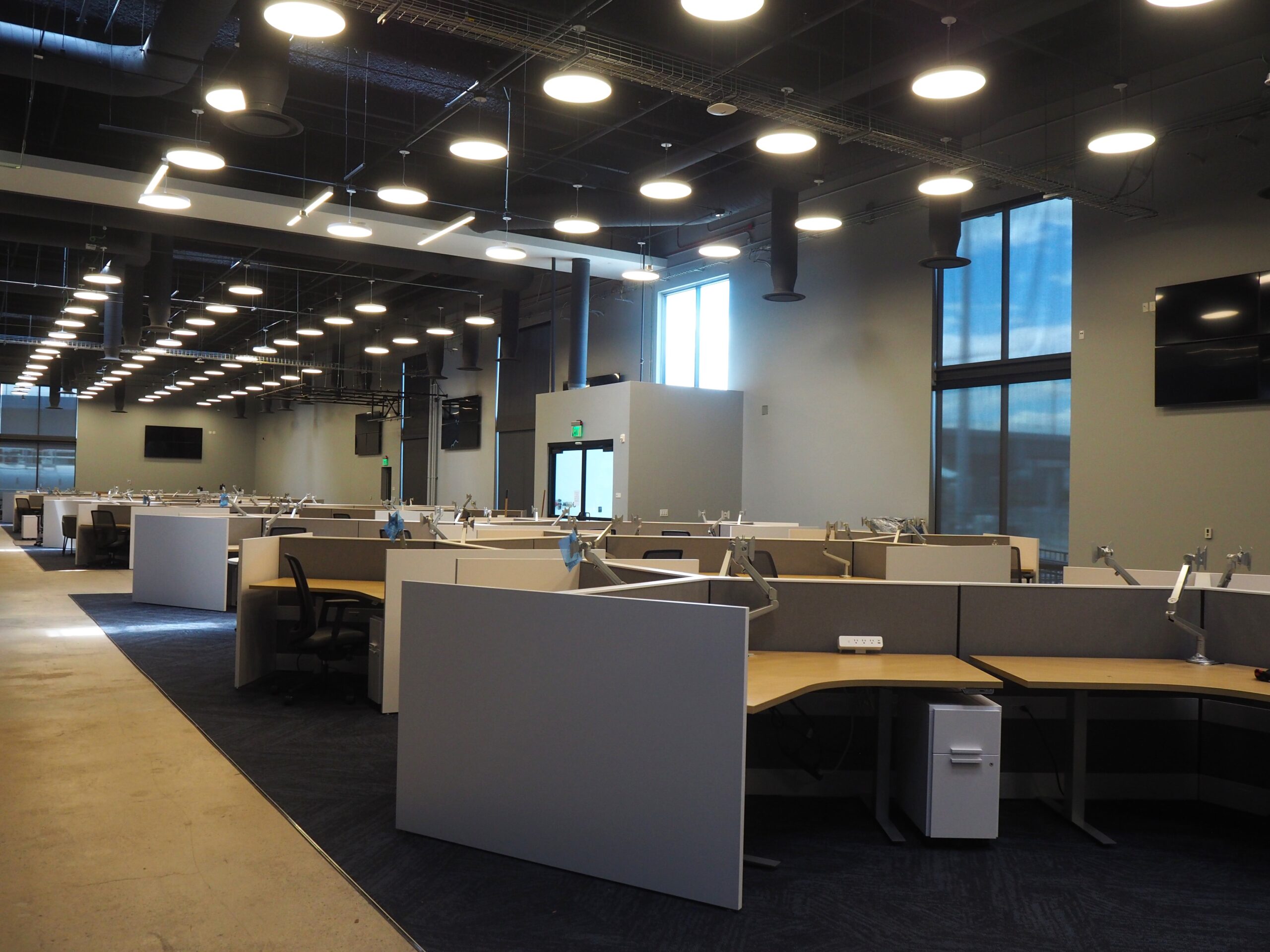
The newsroom within Denver7’s new facility on June 12. (Thomas Gounley/BusinessDen)
On a technical side, Denver7 is also upgrading to newer 2110 standards, which relates to how digital media is sent over an IP network.
“We were fortunate in the timing that allowed us to design and build a facility knowing that we had a system, a technology, a standard which was at a reliable point in time and provided us with a lot of years of growth,” Rylance said. “That standard’s going to be there for quite a while yet.”
The relentless cycle of morning, midday, evening and late-night newscasts has made moving a particularly challenging endeavor for Denver7, according to Joyce.
“We can’t just go dark for a day because we’re moving, because our community relies on us,” he said.
